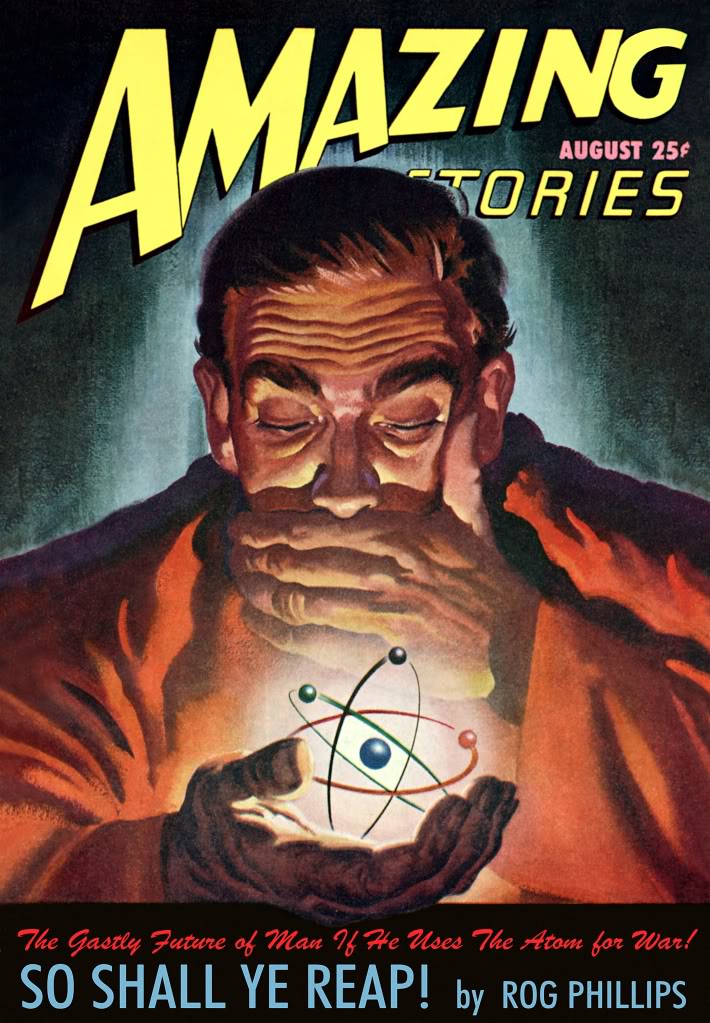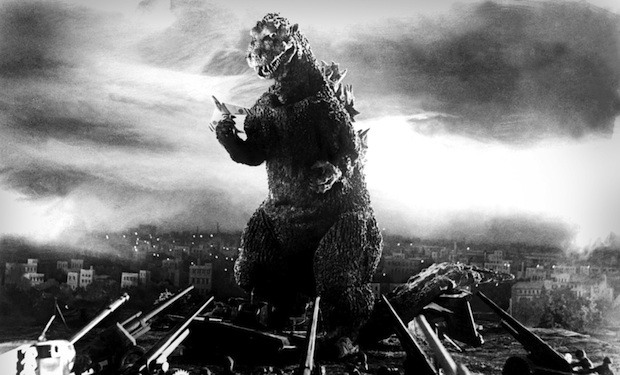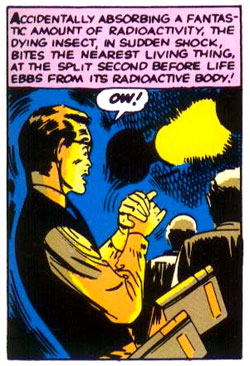Atomic Plants. Godzilla. Spider-Man.
We know by now that most effects of radiation are detrimental. But in the immediate post-war years, the idea that this new atomic force might possibly imbue animals, people, seeds with some of its own mysterious power was widespread.
Roughly coincident with the atomic gardens, films and comic books featured creatures and heroes like Godzilla (1954), Spider-man (1962) and the Incredible Hulk (1962) whose superpowers–and attendant problems–were bestowed by radioactivity. Their mixed potential to be both good and evil, fierce and friendly is an accurate representation of the mingled amazement, hope, and fear the public felt in the nuclear age.


Godzilla in a scene from the film. © Toho Co. Ltd. ALL RIGHTS RESERVED

John Hersey’s classic Hiroshima (1946) (2), contains an account of lush plant growth overtaking the bombed out city; a sight that is described as both beautiful and creepy. His description points, again, to the atom-blasted soil of Hiroshima and Nagasaki as the incubator for the idea that radiation could create super plants.
“Even though the wreckage had been described to her, and though she was still in pain, the sight horrified and amazed her, and there was something she noticed about it that particularly gave her the creeps. Over everything—up through the wreckage of the city, in gutters, along the riverbanks, tangled among tiles and tin roofing, climbing on charred tree trunks—was a blanket of fresh, vivid, lush, optimistic green; the verdancy rose even from the foundations of ruined houses. Weeds already hid the ashes, and wild flowers were in bloom among the city’s bones. The bomb had not only left the underground organs of plants intact; it had stimulated them. Everywhere were bluets and Spanish bayonets, goosefoot, morning glories and day lilies, the hairy-fruited bean, purslane and clotbur and sesame and panic grass and feverfew. Especially in a circle at the center, sickle senna grew in extraordinary regeneration, not only standing among the charred remnants of the same plant but pushing up in new places, among bricks and through cracks in the asphalt. It actually seemed as if a load of sickle-senna seed had been dropped along with the bomb.”





